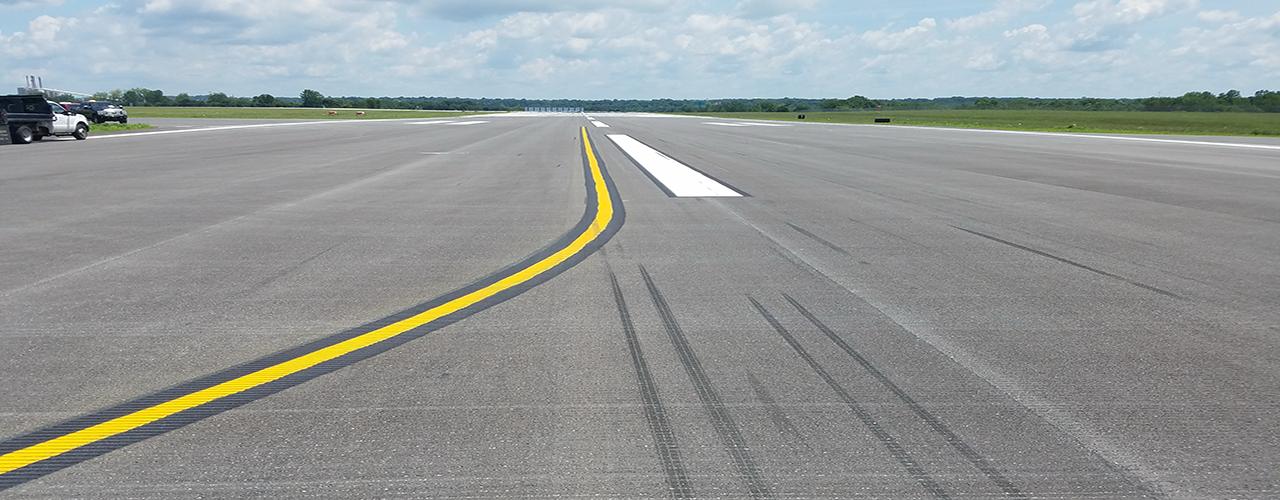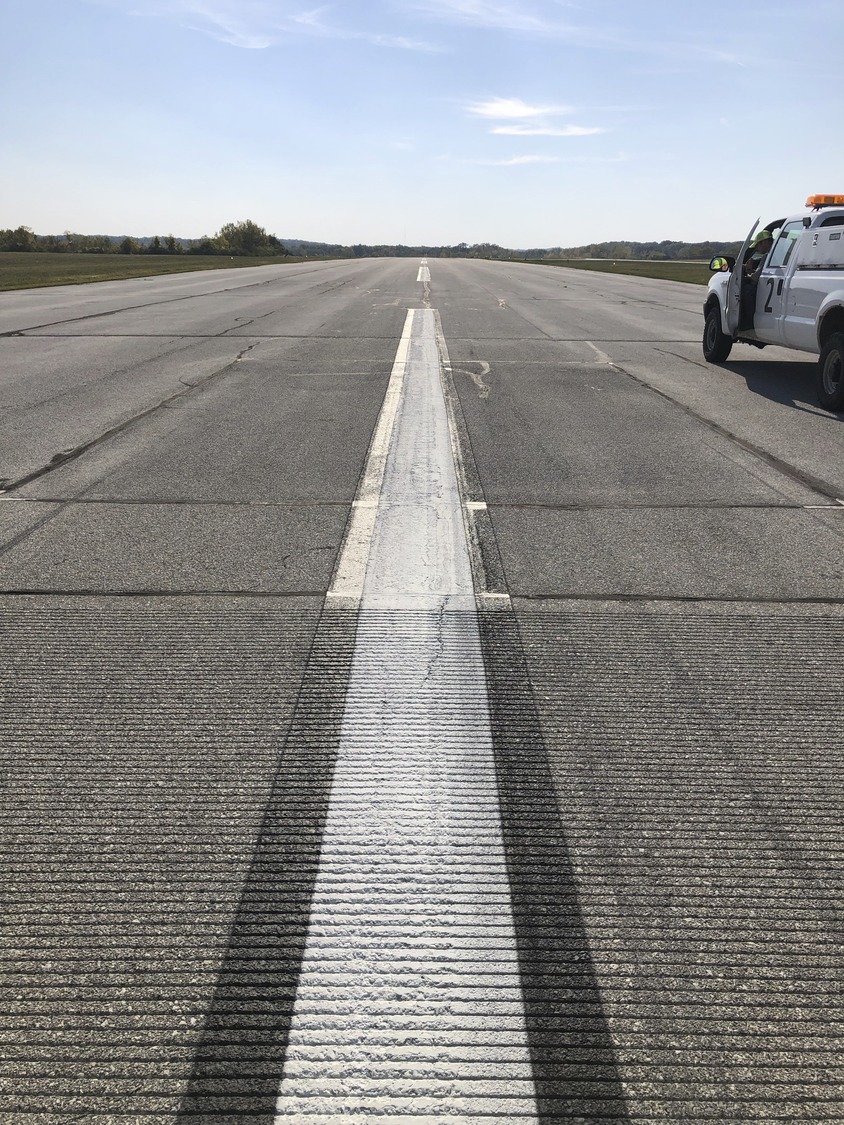LAF Runway 10-28 Rehabilitation

Background
Purdue University Airport’s (LAF) 6,400- by 170-foot primary runway had reached the end of its useful life, was beginning to show signs of distress, and the repairs by the owner to keep it open were beginning to have an impact on the operating budget. The airfield signs were also in disrepair. At the same time, the Part 139 airport was getting requests to land larger aircraft, including wide-body aircraft—all of which was in support of new economic development. Woolpert was retained as part of an on-call planning and engineering services contract to conduct studies, complete the design of a runway rehabilitation, and bid and construct the project.
Woolpert reached out to the Indiana Department of Transportation, whose Roadway Testing Laboratory was in the same city as the airport. The airport sponsor, Woolpert, and INDOT all agreed to partner in studying the pavement to determine the most effective means to ultimately recommend remediation of the pavement. INDOT provided its non-destructive testing (NDT) equipment and design support at no cost to the sponsor. INDOT provided available assistance as the pavement was only about four and half inches of asphalt on a 10-inch rubberized asphalt base, and INDOT had experience with thin pavements and heavy loads. The study also considered existing operator needs, and a temporary, shortened runway was planned and approved by the FAA so that the airport could remain open during construction.
Challenge
It was concluded from the studies that the asphalt and subbase were in very good condition; however, the subgrade was very saturated and yielding. Ultimately, it was recommended that the shoulders be reconstructed due to their condition and new underdrains be installed between the new shoulders with a mill and 4-5-inch overlay of the surface (with the exception of the runway intersection, due to its condition). This provided the most economical solution and minimized offsite hauling. All millings were used on the airfield to construct temporary and permanent roadways. This design was a non-standard FAARFIELD design that incorporated elements of the NDT and site conditions requiring FAA headquarters to validate and ensure future sustainability and acceptability with the recommended selection. Simultaneously, all airfield signs were upgraded to LED with minimal work required to the vault.
Solution
Woolpert phased the project into two separate components. The first phase was runway intersection with airfield signage and taxiway improvements, and the second phase was the remaining runway rehabilitation work. As part of the project, it was identified that runway guard lights, taxiway movement markings for larger aircraft, and taxiway fillets improvements were required at critical taxiway-to-runway intersections to enhance safety.
Outcome
The entire project was completed on schedule and under budget (design and construction in each phase). The design was completed on schedule for FAA award, and the fee was completed within the available funds for award (budget) without modification.

Client
Purdue University
Location
West Lafayette, IN
Services
- Non-destructive testing (NDT)
- Runway intersection with airfield signage and taxiway improvements
- Runway rehabilitation
Benefits
- The integration of NDT testing saved design costs and provided alternative solutions.
- The alternative solutions derived from NDT testing facilitated a more sustainable design, which reduced construction closure durations and costs.
- The asphalt solution would easily provide for a future strengthening project should larger aircraft begin to utilize the facility.